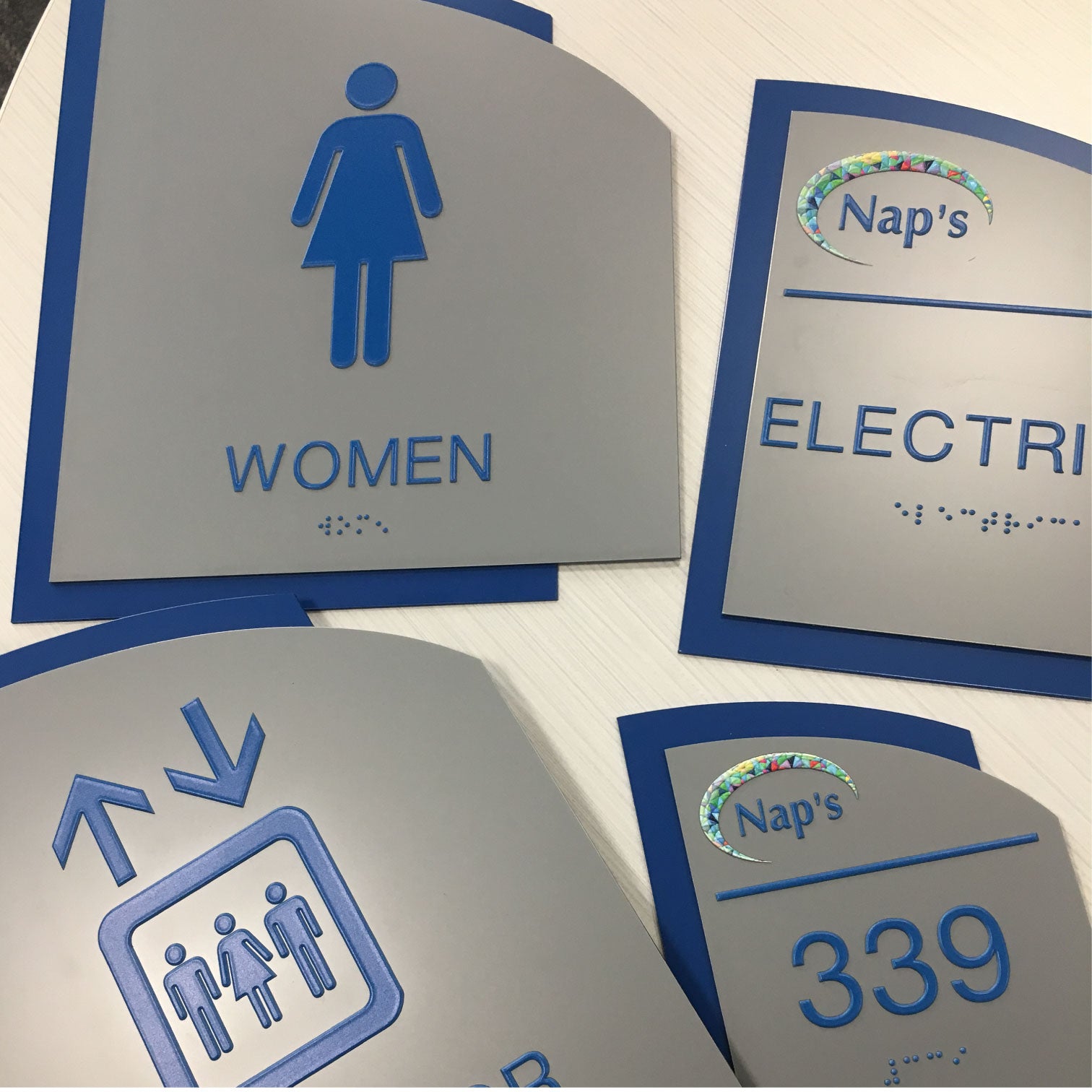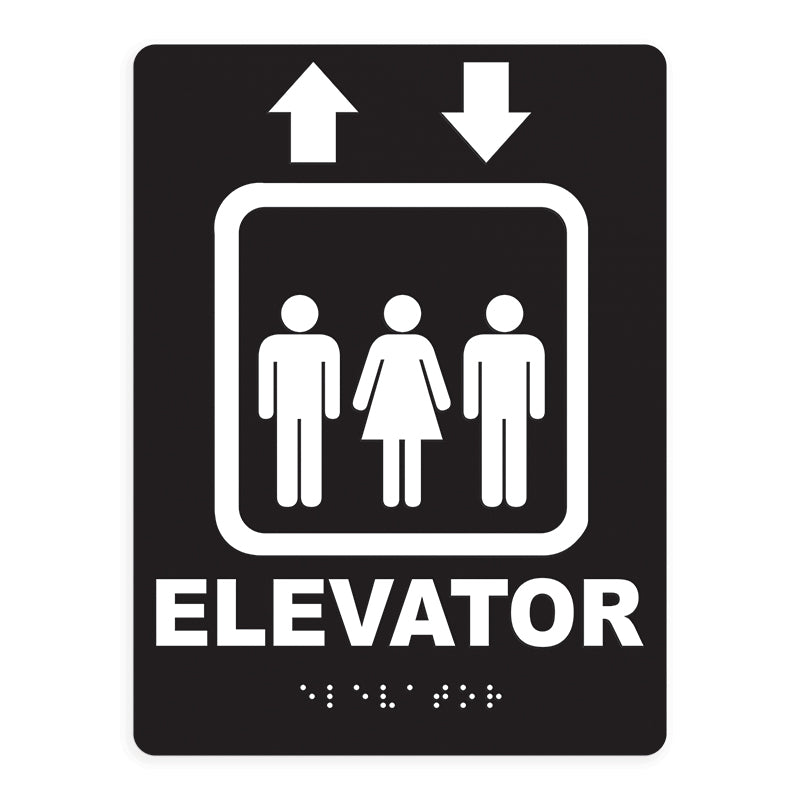Discovering Imaginative Layouts for Reliable ADA Signs
Discovering Imaginative Layouts for Reliable ADA Signs
Blog Article
Checking Out the Trick Attributes of ADA Indicators for Improved Ease Of Access
In the world of accessibility, ADA indications offer as quiet yet powerful allies, guaranteeing that spaces are comprehensive and accessible for people with impairments. By integrating Braille and responsive elements, these indications damage obstacles for the visually damaged, while high-contrast color systems and understandable fonts provide to diverse aesthetic demands.
Relevance of ADA Compliance
Ensuring conformity with the Americans with Disabilities Act (ADA) is vital for cultivating inclusivity and equivalent accessibility in public rooms and work environments. The ADA, enacted in 1990, mandates that all public facilities, companies, and transportation solutions fit people with disabilities, guaranteeing they take pleasure in the exact same legal rights and chances as others. Compliance with ADA standards not just satisfies lawful obligations but likewise boosts an organization's credibility by demonstrating its dedication to variety and inclusivity.
One of the essential facets of ADA compliance is the application of available signage. ADA indications are developed to guarantee that people with specials needs can quickly navigate with spaces and buildings. These indications must abide by details guidelines pertaining to dimension, typeface, color contrast, and placement to assure visibility and readability for all. Appropriately executed ADA signage assists eliminate obstacles that individuals with impairments commonly run into, therefore advertising their freedom and confidence (ADA Signs).
Additionally, sticking to ADA guidelines can mitigate the threat of potential penalties and lawful consequences. Organizations that fall short to abide by ADA guidelines might encounter suits or fines, which can be both monetarily difficult and harmful to their public photo. Hence, ADA compliance is essential to fostering an equitable atmosphere for everyone.
Braille and Tactile Elements
The incorporation of Braille and responsive elements into ADA signage symbolizes the concepts of accessibility and inclusivity. These features are important for individuals who are aesthetically damaged or blind, allowing them to browse public rooms with greater freedom and self-confidence. Braille, a responsive writing system, is vital in offering composed information in a style that can be quickly viewed through touch. It is typically put beneath the matching message on signage to make certain that individuals can access the info without aesthetic aid.
Tactile aspects prolong beyond Braille and include elevated symbols and characters. These components are made to be noticeable by touch, enabling individuals to recognize room numbers, restrooms, leaves, and other essential areas. The ADA sets details standards concerning the size, spacing, and positioning of these tactile aspects to maximize readability and ensure consistency throughout various settings.

High-Contrast Color Design
High-contrast color pattern play an essential role in enhancing the exposure and readability of ADA signs for individuals with visual impairments. These schemes are vital as they optimize the distinction in light reflectance in between text and history, guaranteeing that indicators are conveniently discernible, even from a distance. The Americans with Disabilities Act (ADA) mandates using details color contrasts to accommodate those with restricted vision, making it a vital aspect of conformity.
The efficiency of high-contrast shades hinges on their ability to stick out in numerous lighting that site problems, consisting of poorly lit settings and areas with glare. Typically, dark text on a light background or light message on a dark history you can try here is employed to attain optimum contrast. For example, black message on a yellow or white background supplies a stark visual difference that aids in fast acknowledgment and comprehension.

Legible Fonts and Text Size
When taking into consideration the style of ADA signs, the selection of readable typefaces and suitable message dimension can not be overemphasized. These aspects are crucial for guaranteeing that signs are available to individuals with aesthetic problems. The Americans with Disabilities Act (ADA) mandates that fonts need to be not italic and sans-serif, oblique, manuscript, extremely ornamental, or of unusual kind. These needs aid ensure that the text is conveniently legible from a range which the characters are distinct to varied audiences.
According to ADA guidelines, the minimum text height should be 5/8 inch, and it needs to increase proportionally with checking out distance. Uniformity in message dimension contributes to a natural visual experience, helping individuals in navigating environments efficiently.
Additionally, spacing between lines and letters is integral to readability. Sufficient spacing prevents personalities from showing up crowded, improving readability. By sticking to these criteria, developers can dramatically enhance availability, making sure that signs serves its designated function for all people, no matter their aesthetic capacities.
Reliable Positioning Strategies
Strategic placement of ADA signage is important for maximizing accessibility and ensuring compliance with legal requirements. ADA guidelines state that indications should be placed at an elevation in between 48 to 60 inches from the ground to guarantee they are within the line of sight for both standing and seated people.
Furthermore, indications have to be positioned adjacent to the lock side of doors to allow easy recognition before access. Consistency in indicator placement throughout a center boosts predictability, minimizing confusion and improving overall individual experience.

Verdict
ADA indications play an important duty in promoting access by integrating functions that resolve the requirements of people with impairments. Incorporating Braille and responsive components guarantees critical information is available to the visually impaired, while high-contrast color design and legible sans-serif typefaces improve exposure across different lighting conditions. Efficient placement approaches, such as suitable installing elevations and critical places, additionally promote navigation. These components jointly promote an inclusive atmosphere, emphasizing the relevance of ADA conformity in ensuring equal gain access to for all.
In the realm of accessibility, ADA signs offer as silent yet powerful allies, ensuring that areas are comprehensive and accessible for individuals with disabilities. The ADA, established in 1990, mandates that all public facilities, employers, and transportation services accommodate individuals with impairments, guaranteeing they delight in the same rights and possibilities as others. ADA Signs. ADA indications are developed to guarantee that people with disabilities can conveniently navigate with areas and structures. ADA guidelines specify that indications ought to be installed at a height between 48 to 60 inches from the ground to ensure they are within the line of view for both standing and seated individuals.ADA indications play an important role in promoting access by integrating attributes that attend to the needs of individuals with specials needs
Report this page